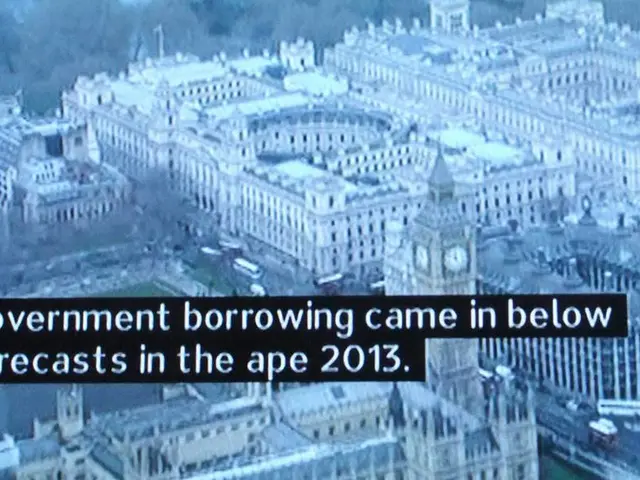President von der Leyen's address at the Fourth Renewable Hydrogen Summit, delivered remotely
=================================================================================================
The Stegra's Boden steel plant in Sweden, supported by the European Innovation Fund, is set to become the largest renewable hydrogen project in the world. This milestone underscores Europe's growing dominance in the renewable hydrogen market. Here's a closer look at why Europe is leading and the measures taken by the European Union to support this growth.
Why Europe is Leading
Europe's lead in renewable hydrogen can be attributed to a combination of policy frameworks, capital commitments, and technological advancements.
Policy Framework and Legal Certainty
The European Commission's Hydrogen and Gas Market Directive provides a clear regulatory framework for the hydrogen sector, ensuring that hydrogen and related fuels are considered low-carbon if they achieve at least 70% lower emissions compared to unabated fossil fuels. This legal certainty offers investment confidence, crucial for the growth of the sector.
Capital Commitments
Europe's refining sector has invested significantly in renewable hydrogen, with over $5 billion committed according to Wood Mackenzie. This industrial commitment to transitioning towards cleaner energy sources is a testament to Europe's dedication to the cause.
Technological Advancements
The region is witnessing significant technological advancements in hydrogen production, storage, and utilization. Innovations in AI, new catalysts, and materials for fuel cells are reshaping the energy landscape, making hydrogen more viable and efficient.
Measures Taken by the EU
The European Union has taken several strategic measures to support the growth of the renewable hydrogen market.
Renewable Energy Directive (RED)
The EU has committed to promoting low-carbon fuels like hydrogen through specific emissions evaluation methodologies, as part of the broader RED, which aims to increase the share of renewable energy in the EU's energy mix.
Clean Industry Deal
The EU has reaffirmed its support for green hydrogen as part of its Clean Industry Deal, underscoring the importance of hydrogen in decarbonizing key sectors of the European industry.
Event and Collaboration Platforms
Europe hosts events like the European Hydrogen Week, which brings together industry leaders, researchers, and policymakers to discuss technology, investment, and infrastructure. Such platforms foster collaboration and drive innovation in the hydrogen sector.
Public Consultations
The Commission plans to launch consultations on methodologies for using Power Purchase Agreements (PPAs) for nuclear energy to enhance clarity in low-carbon hydrogen production from nuclear sources. This step will further diversify the energy mix used for hydrogen production.
These combined efforts highlight Europe's proactive approach to establishing itself as a leader in the renewable hydrogen market, both through policy and technological innovation.
After the first auction, almost 700 million euros were disbursed to projects, set to deliver close to one-sixth of the hydrogen target this decade. This demonstrates the EU's commitment to accelerating the creation of clean hydrogen markets.
The European Hydrogen Bank, a first-of-its-kind initiative, offers a fixed premium for every kilogram of renewable hydrogen produced over the next decade. This incentive further encourages the production of clean hydrogen.
Moreover, a clause has been added to encourage the use of equipment from European companies in hydrogen production, securing energy independence and creating jobs in Europe.
The goal is to bring Europe's vast renewable energy potential to industries for decarbonization. A second auction with 1.2 billion euros in funding is scheduled for December 2022.
Lower prices for clean steel, cement, fuel, plastics, fertilizers, glass, and other hard-to-decarbonize sectors are expected as a result. Under the Renewable Energy Directive, at least 42% of hydrogen used in industry, and 29% in transport, must be renewable by 2030.
The European Commission will present a Clean Industrial Deal in its first 100 days, prioritizing infrastructure for connecting large-scale hydrogen projects with end users. Efforts are being made to accelerate the creation of clean lead markets by working closely with Member States and industry off-takers.
Member States have until May 2025 to turn these targets into national law. The REPowerEU plan aims to produce 10 million tons of renewable hydrogen by 2030. In the past year, Europe has made final investment decisions on over 2 gigawatts of renewable hydrogen projects, which is four times the current installed capacity.
By 2030, the price of a mid-sized electric car built with clean steel could be almost the same as one built with conventional steel, with minimal carbon emissions. Investment in European hydrogen is expected to grow by 140% in 2024, with Europe contributing nearly a third of global investments in electrolysers.
The European Commission is committed to building a world-leading, climate-neutral European economy, step by step. There are 10 other large-scale renewable hydrogen projects in various European countries that have moved from concept to construction.
In conclusion, Europe's leadership in the renewable hydrogen market is a testament to its strategic policy initiatives, capital commitments, and technological advancements. The EU's proactive approach is paving the way for a cleaner, more sustainable energy future.
- The Steagra's Boden steel plant in Sweden, aided by the European Innovation Fund, is poised to be the world's largest renewable hydrogen project, showcasing Europe's growing dominance in the renewable hydrogen market.
- Europe's lead in renewable hydrogen result from policy frameworks, capital commitments, and technological advancements, as evidenced by the European Commission's Hydrogen and Gas Market Directive, significant investments by the refining sector, and innovations in AI, new catalysts, and fuel cell technology.
- The European Union has taken strategic measures to support the growth of the renewable hydrogen market, including promoting low-carbon fuels through the RED, backing the Clean Industry Deal, hosting events like the European Hydrogen Week, and launching consultations on using PPAs for nuclear energy.
- The EU has disbursed nearly 700 million euros to hydrogen projects, which collectively will deliver close to one-sixth of the hydrogen target this decade, demonstrating its commitment to accelerating the creation of clean hydrogen markets.
- The European Hydrogen Bank offers a fixed premium for every kilogram of renewable hydrogen produced over the next decade, further encouraging the production of clean hydrogen.
- The Renewable Energy Directive sets targets for the use of renewable hydrogen in industry and transport, with at least 42% of hydrogen used in industry and 29% in transport required to be renewable by 2030.
- Europe has made final investment decisions on over 2 gigawatts of renewable hydrogen projects, a fourfold increase over the current installed capacity, indicating its continued investment in and commitment to renewable hydrogen as a key player in the global energy transition.




